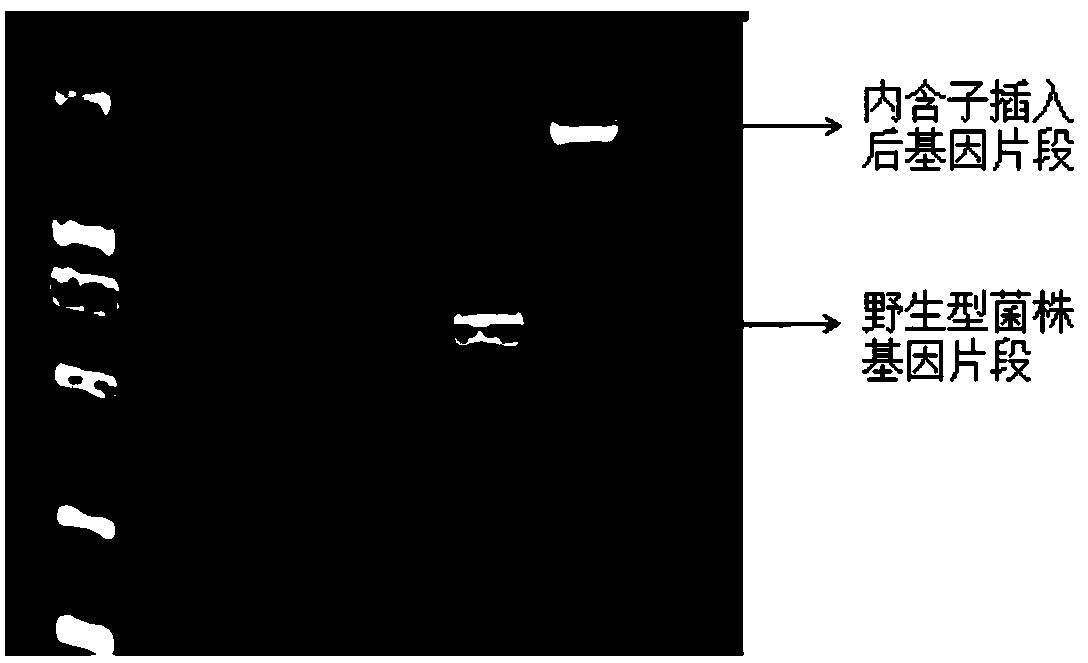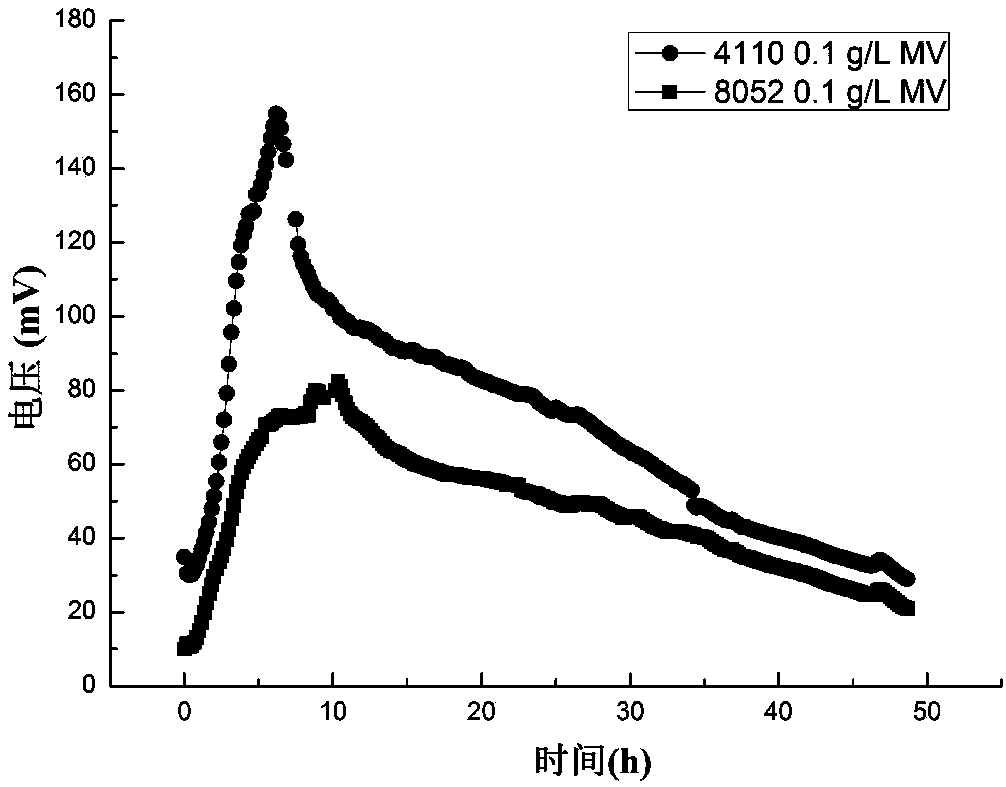Method for improving electricity generation of clostridium beijerinckii and application thereof
A technology of Clostridium beijerinckii and Clostridium beijerinckii electric is applied in the field of environment and new energy, which can solve the problems of unclear microbial electricity-generating mechanism and weak microbial electricity-generating ability, and achieves alleviation of energy crisis, low cost, electronic The effect of high recovery rate
- Summary
- Abstract
- Description
- Claims
- Application Information
AI Technical Summary
Problems solved by technology
Method used
Image
Examples
Embodiment 1
[0026] This example illustrates the construction method of the Clostridium beijerinckii Cbei_4110 gene insertion inactivation recombinant strain.
[0027] 1. Design intron sequence
[0028] According to the Cbei_4110 gene sequence of Clostridium beijerinckii included in the NCBI database (see SEQ ID NO: 1 in the sequence listing for details), a suitable insertion gene site is designed by means of software ( http: / / www.clostron.com ), select to be inserted between 392 and 393, and generate an intron sequence, synthesize the intron sequence S-392, its sequence is shown in SEQ ID NO: 2, and design primers:
[0029] pWJ-OSC-392-S
ggagtgtcgaggatc ctcgag ataattatccttagatgtctctaaag
pWJ-OSC-392-A
ggttctcctacagat tgtaca aatgtggtgataacagataag
Cbei-4110-T-S
aatcaattgctcctacactctgt
Cbei-4110-T-A
atgtcaaaatatatggtgattgat
[0030] The sequences thereof are respectively shown in SEQ ID NO: 3-6.
[0031] The two ends of primers pWJ-O...
Embodiment 2
[0045] This example illustrates the electricity production experiment using 1 g / L glucose by the high-electricity Clostridium beijerinckii constructed above as an anode catalyst.
[0046] (1) Construction of microbial fuel cells
[0047] In this example, a microbial fuel cell using Clostridium beijerinckii to generate electricity as an anode catalyst was established according to existing technologies and methods, including four parts: an anode chamber, a cathode chamber, a proton exchange membrane, and an external circuit. The anode electrode and cathode electrode are PAN-based graphite soft felt (5×5cm), with titanium wire as the external circuit, the external resistance is 1000Ω, the proton exchange membrane is DuPont NafionN117, and the data collector is Keithley series.
[0048] (2) Culture medium formula:
[0049] YPS seed medium: yeast powder 3g / L, peptone 5g / L, glucose 1g / L, ammonium acetate 2g / L, sodium chloride 3g / L, magnesium sulfate heptahydrate 3g / L, potassium dih...
PUM
 Login to View More
Login to View More Abstract
Description
Claims
Application Information
 Login to View More
Login to View More - R&D
- Intellectual Property
- Life Sciences
- Materials
- Tech Scout
- Unparalleled Data Quality
- Higher Quality Content
- 60% Fewer Hallucinations
Browse by: Latest US Patents, China's latest patents, Technical Efficacy Thesaurus, Application Domain, Technology Topic, Popular Technical Reports.
© 2025 PatSnap. All rights reserved.Legal|Privacy policy|Modern Slavery Act Transparency Statement|Sitemap|About US| Contact US: help@patsnap.com



